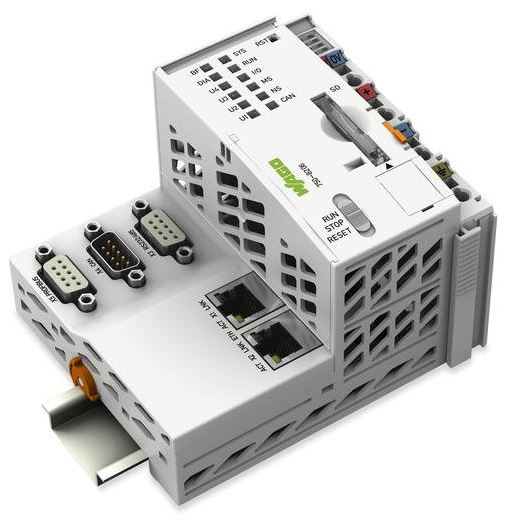
|
September 2019 |
[an error occurred while processing this directive] |
| Bridge
the Gap Exploiting synergies through system integration |
Paula Bisiriyu bisiriyu@inray.de |
| Articles |
| Interviews |
| Releases |
| New Products |
| Reviews |
| [an error occurred while processing this directive] |
| Editorial |
| Events |
| Sponsors |
| Site Search |
| Newsletters |
| [an error occurred while processing this directive] |
| Archives |
| Past Issues |
| Home |
| Editors |
| eDucation |
| [an error occurred while processing this directive] |
| Training |
| Links |
| Software |
| Subscribe |
| [an error occurred while processing this directive] |
Technical development of building
automation
As in all technical environments, technologies continue to develop rapidly. In building automation, this affects all areas: Air conditioning, lighting control, access, energy supply, energy management, etc. Increasingly intelligent and powerful control devices allow complex implementations and powerful networking.
Application-specific protocols
Many areas of building automation have developed suitable technical automation solutions for themselves. This is good because it allows application-specific tasks to be optimally implemented, but also carries the risk of the formation of isolated solutions.
Standardizations
The
problem does not necessarily have to be a problem, however, because the
increasing importance of communication and data exchange in automation
is driving forward standardization. Application-specific solutions can,
therefore, be integrated as soon as they have open standard interfaces.
New Technologies - Cloud, MQTT, OPC UA

The
ability to integrate becomes very important with regard to the
continuous further development of communication technologies. One
example of this is the cloud, which is becoming more and more popular.
Functions such as management, control, monitoring and others are
increasingly being outsourced to cloud platforms. For these platforms,
it is essential that the automation solutions can be connected via
standards and that the data can be used. In the cloud, for example,
communication via MQTT is gaining ground What is MQTT. With MQTT, efficient connections of devices to the
cloud are possible. In the area of automation devices, the OPC UA
standard What is OPC UA is
spreading more and more. With OPC UA, automation devices become
standardized communication partners with clearly defined data
structures. OPC UA also ensures secure data exchange.
Benefits through data exchange and
system integration
The
system integration of the individual systems and applications results
in a higher-quality solution. By supplying current data, management
systems can monitor the current status of the automation systems and
immediately send notifications in problem situations. In addition, the
processing of data in optimization calculations can lead to significant
improvements. The results of the calculations are sent directly to the
automation systems via the existing communication links and applied
immediately.
By
integrating all systems via standard interfaces, the right information
reaches the right system at the right time and thus ensures optimum
operation.
Technical implementation of the
integration

PFC200 Wago https://www.wago.com/media/images/h7c/h16/8934303465502.jpg
[an error occurred while processing this directive]The
infrastructure of system integration takes place at various levels.
Networking within buildings ideally takes place via standardized bus
systems such as BACnet/IP, Dali, CAN or Ethernet. The nodes in the bus
systems are then sensors and actuators, as well as the intelligent
controllers (WAGO PFC200), Beckhoff, air conditioners,
etc.). The logic for automation at field level is implemented in the
controllers. They can run independently but supply and obtain important
data for building management from the higher-level systems.
The
coupling to higher-level systems is done with protocols such as OPC UA
or MQTT. This requires gateway functionalities that can be implemented
directly in the cloud environment (e.g. MQTT Broker) or through gateway
solutions (e.g. OPC Router). Today, these are
increasingly operated directly on the automation devices in dockers containers.
The integration possibilities are manifold at this point. SQL
databases, REST APIs, SOAP services etc. can also be connected.
The
MQTT connectors of the cloud systems are not real MQTT brokers, but
primarily accept MQTT messages for further internal processing. The
leaders here are AWS IoT, Azure IoT Hub, IBM Watson and Google IoT
Core.
With
vertical and horizontal integration, the most important prerequisite is
to rely on manufacturer-independent interfaces so that individual
components and systems remain interchangeable because one thing is
certain, the technical possibilities will undoubtedly develop further.
[an error occurred while processing this directive]
[Click Banner To Learn More]
[Home Page] [The Automator] [About] [Subscribe ] [Contact Us]